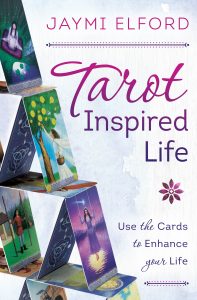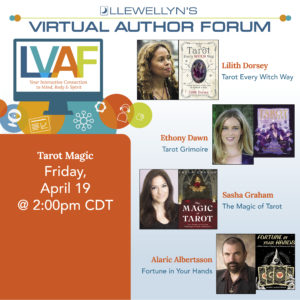What’s Your Reading Style?


Tarot Inspired Life shares ways to use the cards to, well, enhance your life, including becoming a more confident reader. Just as a student who understands their learning style is able to learn better, readers who understand their style will read better. It is important to remember that the style that is best is the one that suits you. Remember, your best style may be a blend of several different methods.
Here, Elford explores three readings styles including examples: symbolic, experience, storytelling, and psychic.
Symbolic Readings
A symbolic reading focuses on the meanings and connections from the symbols in the images. Remember, everything on a card is a symbol used to answer a client’s question. Look at what stands out to you, describe them in terms of how they relate to the question at hand. Refer to your symbol, number, and color dictionaries to create deeper references.
For example:
Auburn has a new boyfriend; she wants to know if he’s the one. The cards get shuffled and out comes the Lovers. Scanning the card reveals a lot of red and purple colors. We talk about the colors, how red is a color of love, and how it can be a warning sign. But the purple on the card suggests a spiritual connection. The number of the card, six, connects this card to the heart chakra, and is in the middle of a cycle. We talk about how the relationship is going, and she tells me it’s going a bit faster than she wants. We discuss ways to slow the relationship down so Auburn can accurately tell if he’s the one for her. She leaves with homework on how to communicate with this partner.
How would you read the Lovers in a new relationship reading? It’s okay to come up with ideas and a path different from mine. Remember, there is no wrong way to read a card.
Experience Readings
Everyone on this planet lives a unique life. Our personalities, youth, schooling, and relationships give us a distinctive eye on life and a long list of experiences. When you read tarot, you are allowed to draw upon these experiences to act as a guide or allegory for yourself or clients on how to act next.
Sometimes when I read for others, I’ll tell clients what the cards mean by using an illustrated example from my own life. It’s relatable and shows my clients how their issues can also affect others. Not only do they know where others have been, they also receive wisdom gained from another who has gone through a similar experience. Of course, it’s up to them to decide what to do with the information; sometimes nothing trumps experience.
Storytelling Readings
Tarot tells a tale. Each and every card has one. In a reading, the answer becomes the story, spilled across several cards. Take a deep breath and look for the story the cards suggest. Let the images become scenes that inspire you, the storyteller, to speak. Start with, “Once upon a time …” and let the people or creatures on the card talk. Describe an event. What is going on? Be creative, figure out what happened before or after the card came into being. What might happen if the image on the card does come true?
Card and Spread Interpretation
Telling a story is a great way to read the cards, especially if you feel blocked or aren’t sure what the cards are saying to you. The storytelling technique is also useful if you’re not sure what the card means in the position of the spread. When you are faced with one of these situations, just take a deep breath, close your eyes, and allow the story to unfold naturally.
Psychic Readings
The final method is psychic readings. We are born with various intuitive gifts. You know those hunches or flashes of weird insight you get? These are psychic gifts at work. Whether you believe these messages are God tapping into your mind, a spirit guide watching over you, or coincidence, these insights can be invaluable during a reading.
I once had a client who inquired about her health. Tarot is a wonderful tool, and while you can gain insight into all aspects of your life, I don’t see the cards as a replacement for the advice of trained professionals. I am not licensed to practice medicine, psychology, or law. I always let clients know tarot is not a replacement for a diagnosis and ask them to visit their qualified professionals first. Those professionals spent years learning and being tested in their areas of study, and no matter how psychic we can be, I firmly believe we as tarot readers are not qualified (or in some cases, certified) to provide guidance on such matters. Of course as I say this, there is a growing body of doctors, psychologists, and lawyers who have an interest in tarot. Some may even integrate the cards into their professional practices, but this is rare—not the norm. If you think of yourself as a psychic and offer readings of this type, be aware of the laws regarding answering health, financial, or legal questions. Arm yourself with your local laws and protect yourself.
Thankfully in my client’s case, she had already seen a doctor and was looking for advice on how to deal with her situation. I shuffled the cards, flipped them over, and got the High Priestess. I must have had “the look” on my face because my client reassured me how she wanted to know. What came out of my mouth astonished us both. I asked her if she had ovarian cancer. She nodded, and her husband gripped her shoulder. She asked me how I knew, and all I could say was that it came to me. Looking back, I can see the logic trail for the answer. The High Priestess is deeply connected to the feminine, and my mind made the connection to the reproductive system. However, I do believe my insight was guided by something other than experience, and that’s the power of psychic intuition at work.










Whats the tarot deck at the top of the article?
Hi Larry! Thanks for reaching out! The image in the post was licensed from Getty; you can view the image and the artist’s work here. We hope that helps!